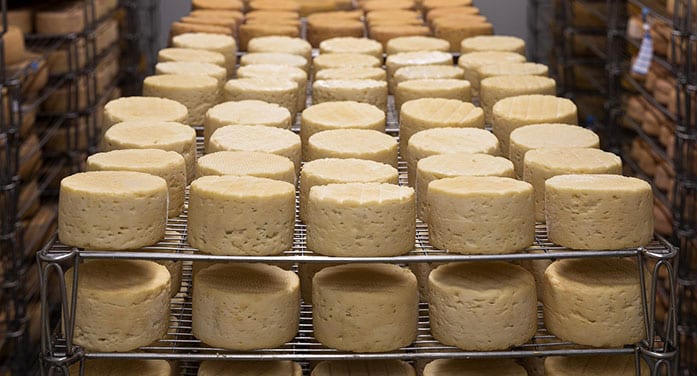By Sylvain Charlebois
and Amy Hill
Dalhousie University
Canadian food and beverage manufacturing plays a key role in supporting farmers and the rest of the food supply chain.
The second largest manufacturing sector, food and beverage, contributed $26.5 billion to Canadian gross domestic product (GDP) in 2020. Just 10 manufacturing sectors – including food manufacturing – contribute 80 per cent of manufacturing’s total portion of GDP.
In the last decade, few new food plants have opened and there have been significant closures. Nevertheless, food manufacturing was the second largest manufacturing sector in Canada after transportation equipment in 2020.
And food manufacturing still managed to grow its GDP contribution from 13.18 per cent in 2010 to 13.47 per cent in 2020.
All this has happened despite the sector lacking investment, suffering thin margins, facing additional grocers’ fees and dealing with aging facilities. So the food and beverage manufacturing sector in Canada is resilient.
But for Canada to become a global force in food processing innovation, the industry needs to be broadly recognized through better, more supportive policy.
And, as we’ve seen through the COVID-19 pandemic, domestic manufacturing is critical to Canadian security, including food security.
A new report by Dalhousie University uses 24 variables to examine the Canadian food and beverage manufacturing industry and the context in which it operates. Data examined the state of the industry in 2010 and 2020, and was used to forecast industry outcomes in 2030, should it continue the current trajectory. All data came from publicly available sources.
Investment, labour concerns
Labour and greenfield investments are significant market concerns. Canada has had a small number of large companies operating broadly across the country, but that number has been shrinking over the past 10 years, with approximately 20 new national facilities opening in the recent decade compared to approximately 4,000 in the U.S.
Manufacturing is also experiencing a labour shortage, but there are concerns that the shortage is due to working conditions and unattractive wages. Wages, in constant dollars, have increased by 16 per cent over the past decade, two per cent above the 14 per cent inflation of goods and services. Hourly food manufacturing wages remain below the average for the goods-producing industries.
Food manufacturers may be pressured to increase wages to retain skilled workers and attract new workers. Women and underrepresented minorities also present labour opportunities that the sector hasn’t fully realized.
Alongside labour challenges and aging infrastructure, a lack of greenfield investments is stunting innovation in food manufacturing and hampering upgrades to old facilities and technology.
Rising costs, thin margins
Grocers’ fees and rising input prices are eroding thin margins. Fees by grocers aren’t new, but they’ve increasingly been used since mid-2020 to structure supplier-grocer relationships.
The price of food products at the factory gate has been steadily increasing but might be eroded by measures such as grocer’s fees. Factory gate prices rose by 27 per cent, while prices at the farm gate rose by 25 per cent over the same period.
Canadians facing rising food security challenges by Sylvain Charlebois
Machinery and equipment prices have increased by 36.1 per cent over the past decade and will continue to do so.
Home renovations and regional lockdowns in 2020 impacted construction and put upward price pressure on building new facilities.
On a positive note, as players such as Google and Amazon enter the transportation market, advances in delivery may benefit food manufacturers and reduce costs.
Technology and waste
Technology and environmental concerns will be important over the next decade.
Investments are required to support the digitization of food manufacturing and have been on the horizon for some time, but most Canadian food manufacturers haven’t transitioned.
In 2010, consumers were thought to be the main cause of food waste, but this has been found to be untrue. Numbers from 2020 indicate that food processing and manufacturing account for 37 per cent of food waste.
This needs to change. Food waste often ends up in landfills and creates emissions equal to putting an additional 12 million cars on the road in Canada each year.
Regrettably, direct federal financial support for food and beverage manufacturers has been limited, possibly because most support typically comes from provincial governments.
It may also be that food and beverage manufacturing’s strong GDP performance makes it seem that government support is unnecessary.
But the pandemic’s spotlight on the food supply chain has changed things.
Government should also consider policies that support the industry and ensure Canadian food security. While financial support may not be realistic now, policy is an important tool for governments.
For example, suppliers have long called for a code of conduct between grocers and suppliers to deal with grocers’ fees. The new draft code from Sobeys and Food, Health and Consumer Products of Canada (FHCPC) provides a framework for a government version.
There are some serious questions to consider about the relationship between industry and the federal government, and between suppliers and Canada’s large grocers.
Partnerships are needed if the industry is to continue to provide food security to Canadians and if Canada is to address some of its biggest challenges in the next few years – including climate change.
Dr. Sylvain Charlebois is senior director of the agri-food analytics lab and a professor in food distribution and policy at Dalhousie University. Amy Hill holds a Bachelor of Science (Marine Biology/Oceanography combined) and a Masters of Marine Management degree from Dalhousie University.
Sylvain and Amy are two of our Thought Leaders. For interview requests, click here.
The views, opinions and positions expressed by columnists and contributors are the authors’ alone. They do not inherently or expressly reflect the views, opinions and/or positions of our publication.



